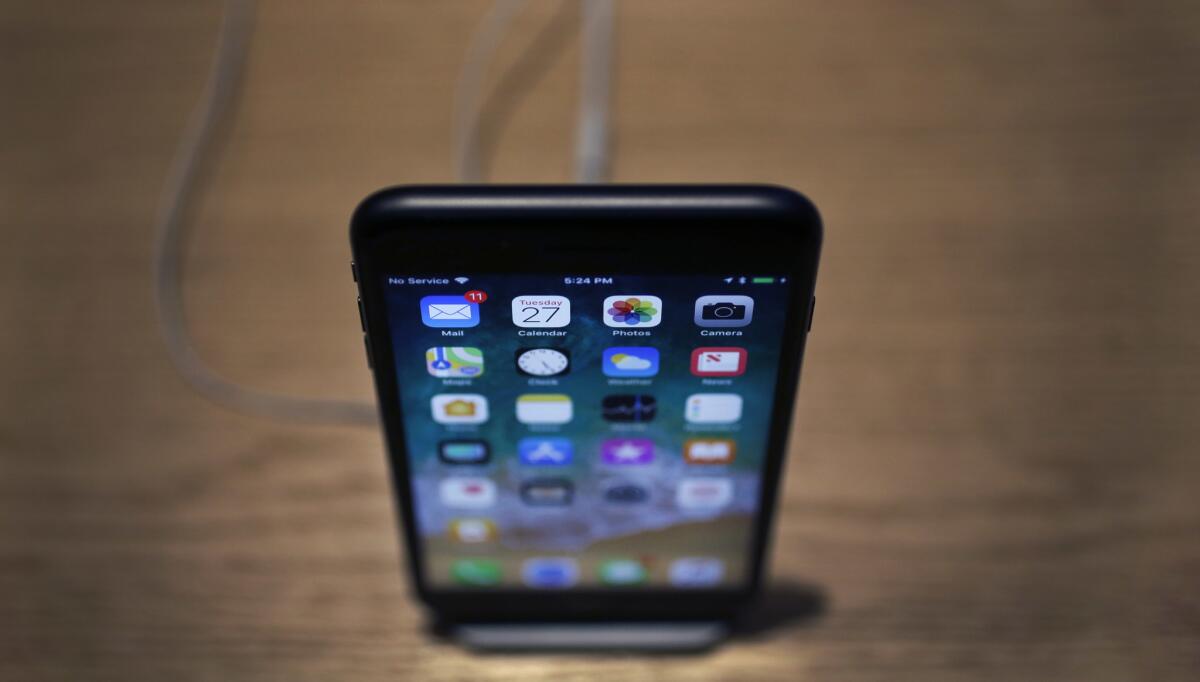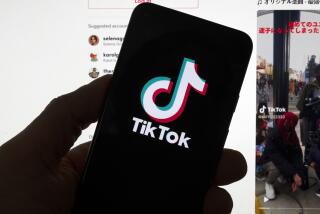Websites infected iPhones with spyware

- Share via
Suspected nation-state hackers used malware-laden websites to infect iPhones with spyware in what security researchers are calling the worst general security failure yet affecting the Apple devices.
Announced late Thursday by Google researchers, the vulnerabilities were quietly fixed by Apple Inc. in February but only after iPhone users were exposed for more than two years — during which, researchers estimated, the infecting websites received thousands of visitors a week.
The researchers did not say who was behind the cyberespionage or what set of iPhone users was targeted, but experts said the operation had the hallmarks of a nation-state effort.
Sensitive data accessed by the spyware included WhatsApp, iMessage and Telegram text messages, Gmail, photos, contacts and real-time location — essentially all the databases on the victim’s phone. While the messaging applications may encrypt data in transit, it is readable at rest on iPhones.
“This is definitely the most serious iPhone hacking incident that’s ever been brought to public attention, both because of the indiscriminate targeting and the amount of data compromised by the implant,” said former U.S. government hacker Jake Williams, the president of Rendition Security.
Google researcher Ian Beer said in a blog post late Thursday that the discovery should dispel any notion that it costs a million dollars to successfully hack an iPhone. That’s a reference to the case of a United Arab Emirates dissident whose iPhone was infected in 2016 with so-called zero-day exploits, which have been known to fetch such high prices.
“Zero day” refers to the fact that the affected software’s developers don’t know about the vulnerability before it’s exploited, and thus they have had zero time to develop patches to fix it.
The exploit targeting iPhones was discovered by Google researchers at Project Zero, which hunts for security vulnerabilities in software and microprocessor firmware — independent of their manufacturers — that criminals, state-sponsored hackers or intelligence agencies can use.
“This should serve as a wake-up call to folks,” said Will Strafach, a mobile security expert with Sudo Security. “Anyone on any platform could potentially get infected with malware.”
Beer said his team estimated that the infected websites used in the “indiscriminate watering hole attacks” receive thousands of visitors per week. He said the team collected five separate chains of exploits covering Apple’s iOS system as far back as version 10, released in 2016.
Apple did not immediately respond to a request for comment on why it did not detect the vulnerabilities on its own and whether it can assure users that such a general attack could not happen again. Privacy assurance is central to the Apple brand.
Neither Google nor Beer responded immediately to questions about the attackers or the targets, though Beer provided a hint in his blog post: “To be targeted might mean simply being born in a certain geographic region or being part of a certain ethnic group.”
Williams, of Rendition Security, said the spyware implant wasn’t written to transmit stolen data securely, suggesting an authoritarian state was behind it. He speculated that it was probably used to target political dissidents.
More to Read
Inside the business of entertainment
The Wide Shot brings you news, analysis and insights on everything from streaming wars to production — and what it all means for the future.
You may occasionally receive promotional content from the Los Angeles Times.










